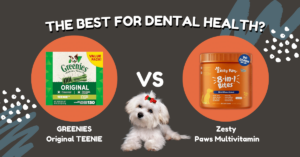If you’re a dog lover but suffer from allergies, you may have heard of hypoallergenic dogs as a solution to your problem. These breeds are often marketed as being allergy-friendly, making them an attractive option for those with allergies. However, there are several misconceptions and myths surrounding hypoallergenic dogs that need to be debunked. In this article, we will address these common myths and provide you with accurate information about hypoallergenic dogs.
Introduction
Before diving into the myths, let’s first understand what hypoallergenic dogs are. Hypoallergenic dogs are breeds that are believed to produce fewer allergens, the proteins found in a dog’s skin cells, saliva, and urine that can trigger allergic reactions in some people. These dogs are often recommended for individuals with allergies as they are thought to be less likely to cause an allergic reaction.
Myth 1: Hypoallergenic dogs are completely allergy-free
One of the most common misconceptions about hypoallergenic dogs is that they are completely allergy-free. However, this is not entirely true. While hypoallergenic dogs are believed to produce fewer allergens compared to other breeds, they still produce some level of allergens. The amount of allergens produced can vary from one dog to another, and even individual dogs of the same breed can produce different levels of allergens.
Myth 2: Hypoallergenic dogs don’t shed
Another common myth about hypoallergenic dogs is that they don’t shed. Shedding is a natural process for dogs to get rid of old or damaged fur, and all dogs, including hypoallergenic breeds, shed to some extent. However, hypoallergenic dogs are believed to shed less compared to other breeds, which can help reduce the amount of allergens in the environment.
Myth 3: Hypoallergenic dogs are low-maintenance
Some people believe that hypoallergenic dogs are low-maintenance when it comes to grooming. However, this is not always the case. While hypoallergenic dogs may have a specific type of coat that requires less grooming, such as a curly or wiry coat that doesn’t shed much, they still need regular grooming to keep their coat healthy and prevent matting. Neglecting grooming
can lead to skin issues and can increase the allergens in the environment.
Myth 4: Hypoallergenic dogs are always small breeds
It’s a common misconception that all hypoallergenic dogs are small breeds. While it’s true that many hypoallergenic dogs are small in size, such as the Bichon Frise, Maltese, or Shih Tzu, there are also medium and large breed dogs that are considered hypoallergenic, such as the Poodle or Portuguese Water Dog. The size of the dog does not necessarily determine its hypoallergenic properties; it depends on the individual dog and its specific coat type.
Myth 5: Hypoallergenic dogs are less likely to cause allergies
Another myth is that hypoallergenic dogs are less likely to cause allergies. While it’s true that hypoallergenic dogs are believed to produce fewer allergens, they can still cause allergic reactions in some individuals. Allergies are complex and can vary from person to person, and factors such as individual sensitivities, exposure levels, and overall health can play a role in allergic reactions. It’s important to remember that no dog breed is completely hypoallergenic, and it’s essential to spend time with a dog before making a decision if you have allergies.
Myth 6: Hypoallergenic dogs are less energetic
There’s a misconception that hypoallergenic dogs are less energetic and don’t require much exercise. However, this is not true. Hypoallergenic dogs, just like any other breed, have their own personalities and energy levels. Some hypoallergenic breeds, such as the Poodle or Terrier breeds, are known for their high energy levels and need for regular exercise and mental stimulation. It’s essential to research and understand the specific needs of the hypoallergenic breed you’re interested in to ensure they are a good fit for your lifestyle and energy level.
Myth 7: Hypoallergenic dogs are expensive
Many people believe that hypoallergenic dogs are expensive. While it’s true that some hypoallergenic breeds may be more costly due to their popularity and demand, not all hypoallergenic dogs are expensive. There are hypoallergenic breeds that are relatively affordable, and the cost of a dog also depends on various factors such as breeder reputation, bloodline, and location. It’s important to consider the overall cost of owning a dog, including food, grooming, vet bills, and other expenses, and not solely focus on the initial purchase price.
Myth 8: Hypoallergenic dogs are rare
There’s a common misconception that hypoallergenic dogs are rare and hard to find. While some hypoallergenic breeds may not be as common as other breeds, they are not necessarily rare. Many hypoallergenic breeds can be found in reputable shelters, rescue organizations, and through responsible breeders. It’s essential to do thorough research and find a reputable source when looking for a hypoallergenic dog, regardless of the breed, to ensure the health and well-being of the dog.
Myth 9: Hypoallergenic dogs are the best choice for all allergy sufferers
Another myth is that hypoallergenic dogs are the best choice for all individuals with allergies. While hypoallergenic dogs may be a good option for some people with mild allergies, they may not be suitable for everyone. It’s important to remember that allergies are individual and can vary from person to person. Some people may still experience allergic reactions to hypoallergenic dogs, while others may not have any issues with non-hypoallergenic breeds. It’s crucial to spend time with different breeds and consult with a healthcare
provider before making a decision if you have allergies.
Myth 10: Hypoallergenic dogs are not real dogs
This is a common misconception about hypoallergenic dogs. However, hypoallergenic dogs are indeed real dogs. They are purebred or mixed breed dogs that are specifically bred to produce fewer allergens, making them potentially more suitable for individuals with allergies. They may have different coat types or produce fewer allergens in their saliva, urine, or dander, which are the primary sources of pet allergens. Hypoallergenic dogs have the same physical and emotional characteristics as other dogs and can make loving and loyal pets.
Myth 11: Hypoallergenic dogs don’t need grooming
This is a false belief. Just like any other dog, hypoallergenic dogs require regular grooming to maintain their coat health and prevent matting, tangling, and skin issues. Grooming practices may vary depending on the specific breed and coat type of the hypoallergenic dog, but they generally require brushing, bathing, and trimming to keep their coat clean, healthy, and hypoallergenic. Regular grooming also helps to minimize shedding, which can reduce the amount of allergens in the environment.
Myth 12: Hypoallergenic dogs are hypoallergenic to everyone
This is not entirely true. While hypoallergenic dogs are bred to produce fewer allergens, they can still cause allergic reactions in some individuals. Allergies are complex and can vary from person to person. Some people with allergies may still experience symptoms such as sneezing, itching, watery eyes, or skin rash when exposed to hypoallergenic dogs. The severity of allergies can vary depending on individual sensitivity, the specific breed of the hypoallergenic dog, and other factors. It’s important to spend time with hypoallergenic dogs and consult with a healthcare provider before getting a dog if you have allergies.
Myth 13: Hypoallergenic dogs don’t need exercise
This is a misconception. Like all dogs, hypoallergenic dogs need regular exercise to stay healthy and happy. Exercise helps to maintain their physical and mental well-being, prevent obesity, and strengthen the bond between the dog and their owner. The amount and type of exercise may vary depending on the breed, age, size, and energy level of the hypoallergenic dog, but they still need opportunities for physical activity and mental stimulation. Regular exercise also promotes good behavior and reduces the risk of behavioral issues in dogs, regardless of their hypoallergenic status
Conclusion
In conclusion, there are several common myths about hypoallergenic dogs that need to be debunked. While these dogs are often believed to be completely allergen-free, it’s important to understand that no dog breed is truly hypoallergenic. Hypoallergenic dogs are not immune to shedding or producing allergens, and individual factors such as coat type, grooming practices, and the sensitivity of the individual can all play a role in triggering allergies.
It’s crucial to do thorough research and spend time with different dog breeds, including hypoallergenic breeds, before making a decision if you have allergies. It’s also essential to consult with a healthcare provider to determine the best options for managing allergies if you’re considering getting a dog. Taking preventive measures such as regular grooming, keeping the home clean and free from allergens, and consulting with a veterinarian can also help reduce the risk of allergies caused by pets.
FAQs (Frequently Asked Questions)
- Are hypoallergenic dogs completely allergen-free? No, hypoallergenic dogs are not completely allergen-free. While they may produce fewer allergens, they can still cause allergic reactions in some individuals.
- Are all small dog breeds hypoallergenic? No, not all small dog breeds are hypoallergenic. Hypoallergenic properties depend on the individual dog and its specific coat type, not just its size.
- Can hypoallergenic dogs still cause allergies? Yes, hypoallergenic dogs can still cause allergies in some individuals. Allergies are complex and can vary from person to person.
- Are hypoallergenic dogs less energetic? No, hypoallergenic dogs can have varying energy levels just like any other breed. It depends on the individual dog and its personality.
- Are hypoallergenic dogs always expensive? Not necessarily. While some hypoallergenic breeds may be more expensive, there are also affordable options available. The cost of a dog depends on various factors such as breeder reputation, bloodline, and location.
In conclusion, it’s important to dispel the myths and misconceptions surrounding hypoallergenic dogs. While these breeds may be a good option for some individuals with allergies, it’s essential to understand that no dog breed is completely hypoallergenic. Thorough research, spending time with different breeds, and consulting with a healthcare provider are key steps in making an informed decision if you have allergies and are considering getting a dog. With proper care and preventive measures, hypoallergenic dogs can still make loving and cherished companions for those who may have allergies.









